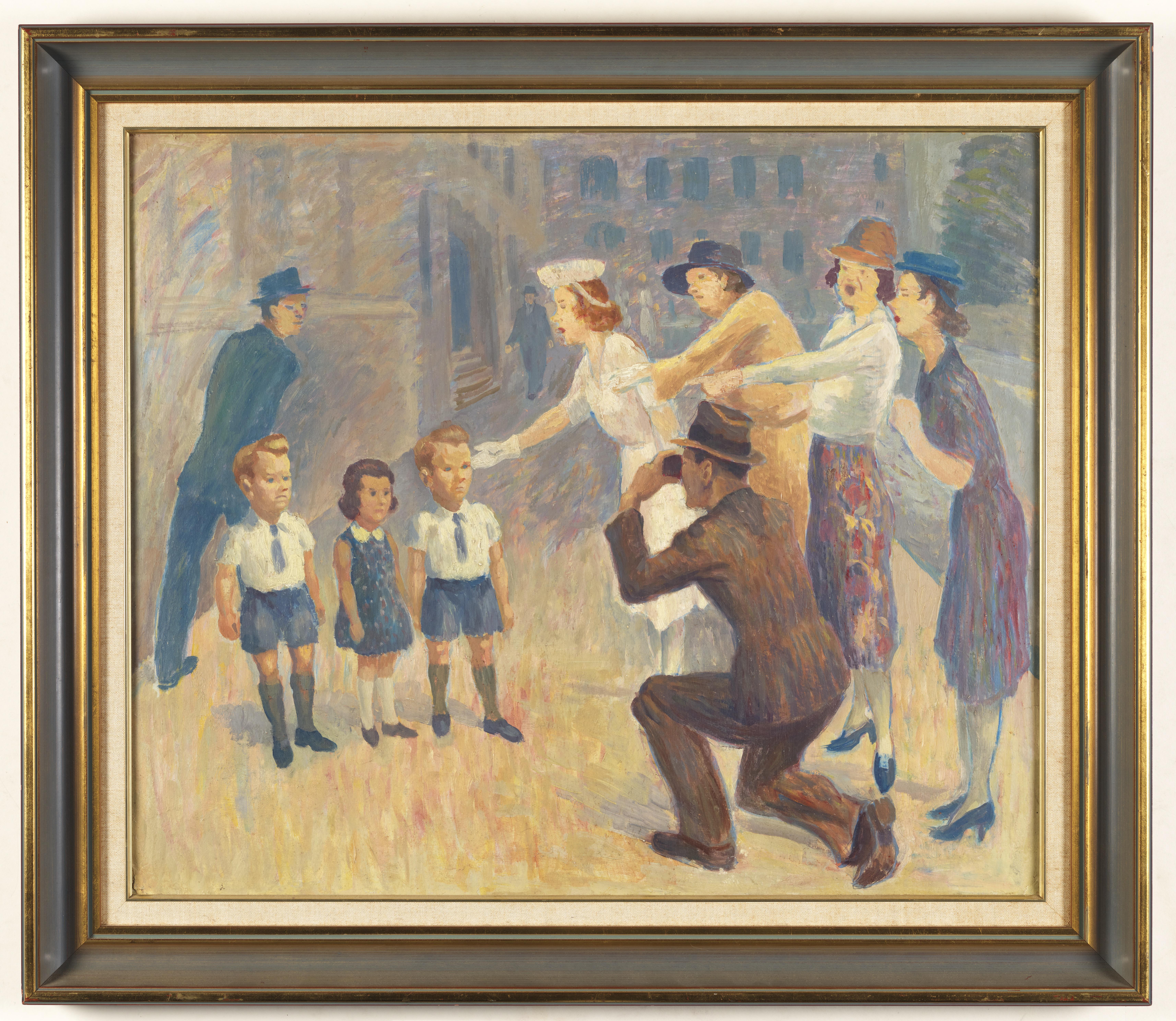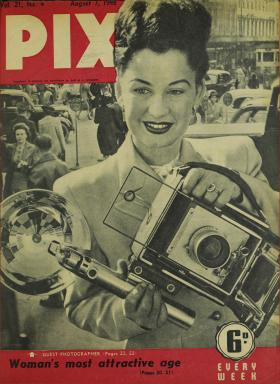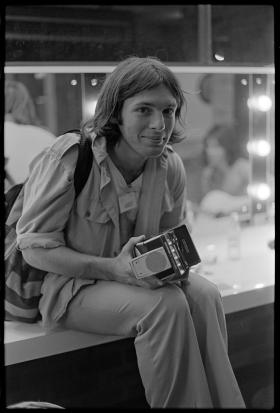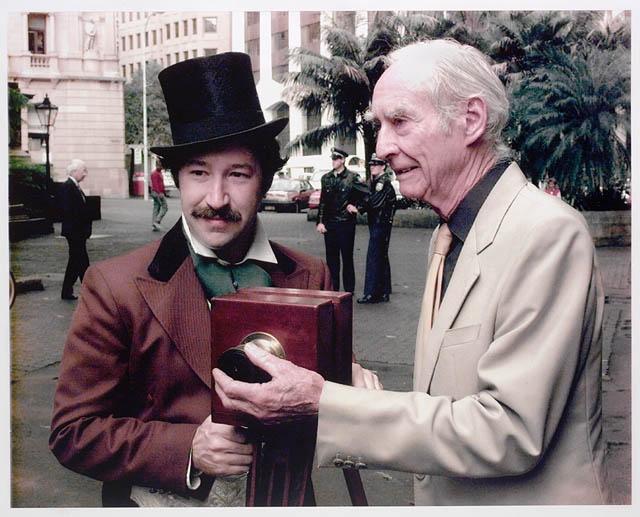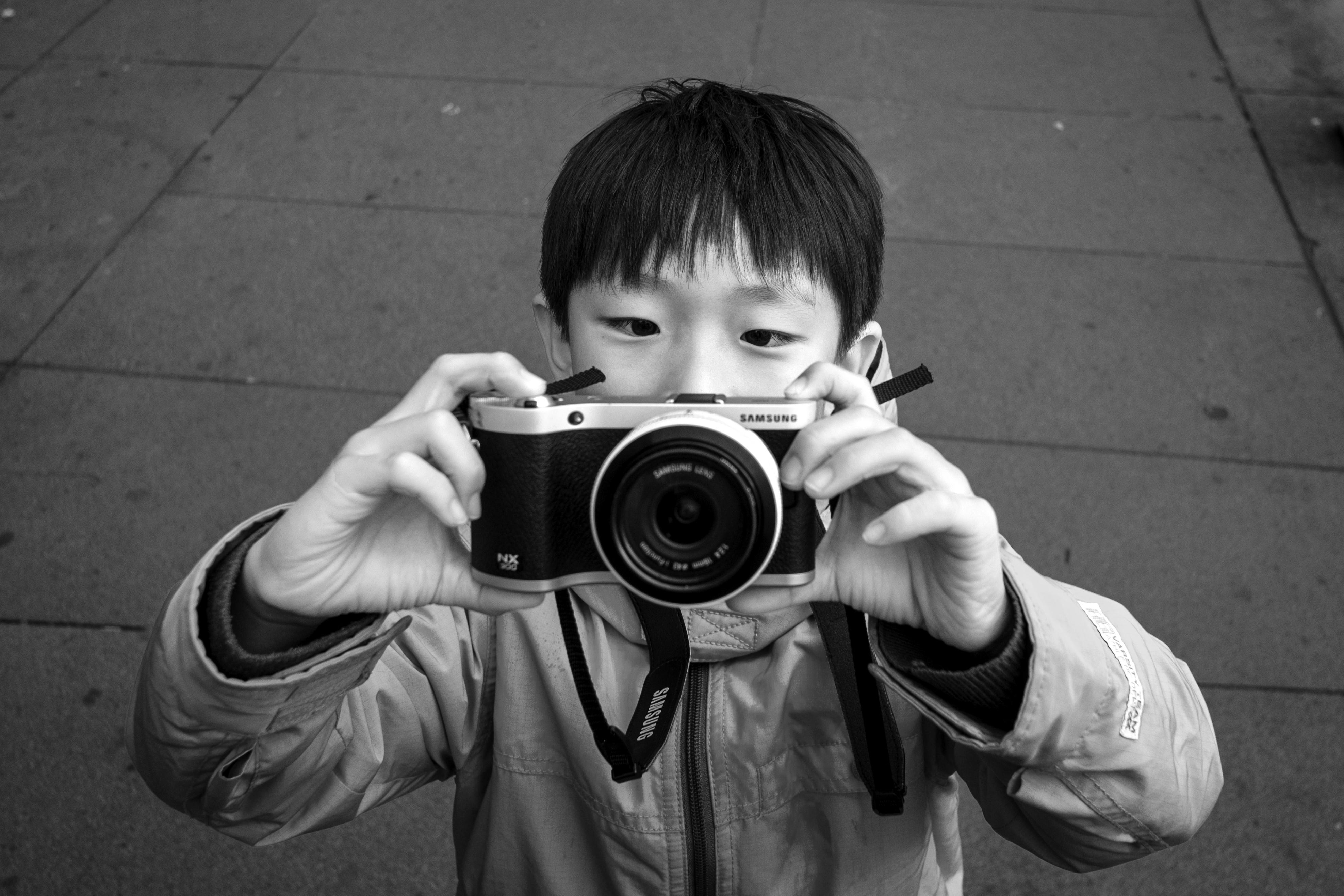Take 5 cameras
Through the lens of the collection here are five favourite cameras.
STREETSNAPPED
This painting, from around 1940 and attributed to artist Roland Wakelin, depicts a street photographer in action. Once a common sight in Australian towns and cities between the 1930s and the late 1950s, street photography emerged when personal camera ownership was still rare. Few people would have escaped being snapped by a street photographer at some time or another. These roving photographers, armed with small portable cameras and positioned in key locations, took hundreds of photos of pedestrians each day, trying to elicit a sale by placing themselves in people’s paths. Potential customers were handed a numbered card with the address of the company where prints
FRONT PAGE
Adelie Hurley (1919–2010), pictured at left with her favourite Pacemaker Speed Graphic press camera on the 7 August 1948 cover of PIX magazine, was one of Australia’s first female photojournalists. With attached bulb flash, sturdy hand-held construction and side-mounted rangefinder, Graflex cameras were the camera of choice for photojournalists and wartime correspondents. One of Antarctic explorer and photographer Captain Frank Hurley’s three daughters, Adelie Hurley began her career with PIX magazine in the late 1930s and worked on almost every paper in Sydney up until the 1960s. Because of her capacity to consistently bring back a great picture, alongside her experimentation with interesting angles, she became known as ‘Front Page Hurley’.
POLAROID MOMENT
The Polaroid story began more than 70 years ago when Edwin H Land invented instant film. First available commercially in the late 1940s, by the 1960s almost half of all American households owned a Polaroid camera. The Polaroid SX-70 Land Camera, like the one held here by Jon Lewis in this c 1976 photograph by William Yang, was the culmination of Land’s all-in-one instant development system. Launched in 1972, it was the world's first instant camera to use integral film (containing negative, developer and fixer) and the first folding SLR camera. Polaroid’s top-of-the-line camera, with its velvety chrome finish and elegant shape, was fully collapsible, automatic and motorised. The instant colour prints it produced in minutes seemed like absolute magic. By 1973, Polaroid was producing 5000 of these cameras a day.
Daguerreotype to digital
Sydney's first photograph was taken on 13 May 1841, using a daguerreotype camera, like the one shown here. It was brought to Australia by visiting French sea captain Augustin Lucas, who conducted a public demonstration of the camera in the hope of selling it. The image produced was reported to be ‘an astonishingly minute and beautiful sketch … of Bridgestreet and part of George-street, as it appeared from the Fountain in Macquarie-place’. This digital photograph of Sandie Barrie and Max Dupain was shot at the same spot on 13 May 1991, by pioneering digital photographer Lucien Samaha, to mark the 150th anniversary of that event, using a prototype Kodak Digital Camera System.
CANDID CAMERA
This photo is part of the series ‘Sydney Town Street Portraits’ shot by documentary photographer Jon Lewis (1950–2020) in homage to street photographers of the past. The boy in this 2014 image, taken at Circular Quay, has a now-familiar stance: he holds Lewis’s Samsung NX 300 digital camera at arm's length — rather than up to one eye — to frame the shot through the screen on the back.
When digital cameras first hit the shelves in 1995, photographers could capture and view images without the need for film, negatives or physical prints. Digital technology’s automated point-and-shoot functions and easy editing, ensure nearperfect pictures as photographers check the quality of their shot immediately. The arrival of the smartphone with its integrated camera has brought digital photography to the masses.
Margot Riley, Curator, Research & Discovery
This story appears in Openbook autumn 2023.
